The Ministry of Defence has resisted calls to bring forward the in-service date or increase the build rate of the Royal Navy’s Multi-Role Strike Ship (MRSS) programme, despite a pointed parliamentary intervention by former First Sea Lord Lord West and mounting concern over the retirement of key amphibious platforms.
In a written question tabled on 14 July, Lord West asked whether the Government planned to accelerate delivery of the first MRSS and what steps were being taken to speed up construction of the remaining five vessels.
Responding for the Government, Defence Minister Lord Coaker stated that the programme “remains on target for the first of class to be delivered in the early 2030s” and is still progressing through its Concept Phase. He added that the Royal Navy and Defence Equipment and Support (DE&S) are working on “key user requirements, conceptual designs, affordability, and exportability assessments.”
This respons matches with previous public statements from the MOD but offered no new commitment to advancing timelines or scaling production.
More detailed information about the MRSS class has gradually emerged. At the Combined Naval Event in Farnborough in May 2025, officials outlined that the ships will include a well deck, extended-range insertion craft, a hangar-equipped flight deck, and a mission bay suitable for operating uncrewed maritime systems. The ships are also being designed to be fitted for but not with directed energy weapons, and the MOD is considering options to integrate vertical launch cells.
Two types of future landing craft are in development for the MRSS: the Commando Insertion Craft (CIC), which will deliver troops, vehicles and intelligence, surveillance and reconnaissance (ISR) capabilities; and the Commando Utility Craft (CUC), which may be adapted for uncrewed systems or containerised strike capabilities. In March 2025, Defence Minister Maria Eagle confirmed that the ships had been renamed Multi-Role Strike Ships to reflect their planned combat capability.
The Concept Phase is scheduled to conclude in 2026, after which the programme will enter the assessment stage. The MRSS class was first mentioned in the 2021 Integrated Review and funding was announced in 2024. The plan is to procure up to six vessels to replace the Albion-class LPDs, the Bay-class LSDs and RFA Argus.


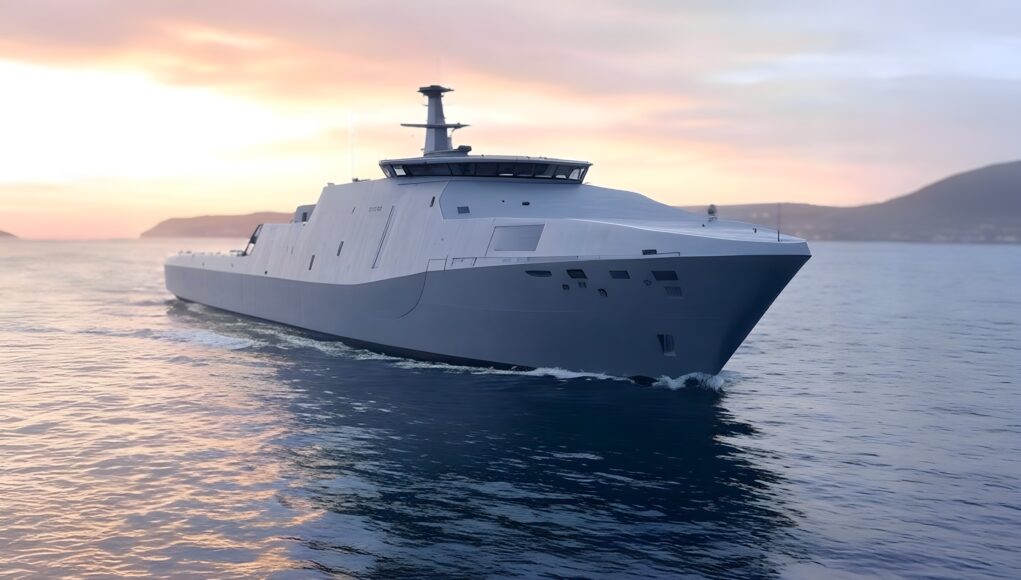
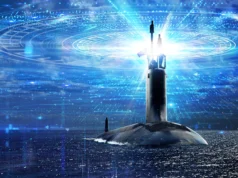

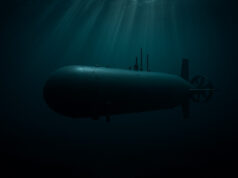

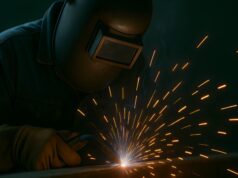

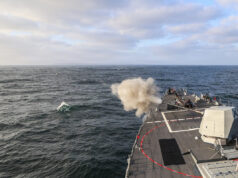
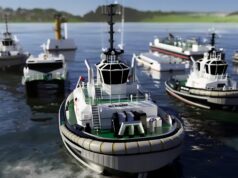
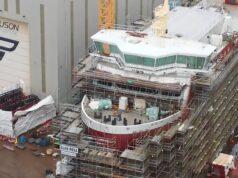
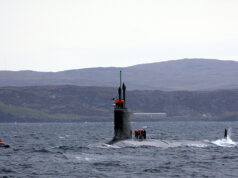

The MoD is very good at concept phases.
So, still no sense of urgency… Where it is possible to speed things up, I would have thought it obvious that it should be done!
This is the UK, only dead slow or stop allowed here.
Only bla bla bla but no new orders . Britain wll be the last country between Major powers.
Only 15 escorts
150 aircraft
100 tanks.
Ridiculous
As an example a mid Power as Spain has more aircraft and tanks and with New orders of 25 additional F18,s and more eurofighters.
Future orders for a New conventional Carrier and 2 LPH,s
Is Britain a Major power now ?.
Spain has next to no capability to project naval power, no nuclear deterrent, no penetrating capability within its air force, and aircraft carrier fully reliant on outdated jump jets, little in the way of aerial refueling capability, no global airlift capability, et cetera.
So its just the carriers and the subs make Britain a major power then – its a good job we spend/have spent so much money on them then.
Well, yeah, in a nutshell. The thing that separates regional and major powers is the ability to project power far beyond your borders, enabled by carriers, auxiliary fleets, air-to-air refueling, overseas bases, strategic airlift and nuclear submarines. The exception to much of this would be Italy.
It’s the strategic capabilities that essentially make a world power vs a regional power.. a regional power cannot send an SSN across the globe to close a seaway or send a carrier and a couple of squadrons of modern fighter jets..
Given the list of planned capabilities, I am left wondering what the purpose of the elusive Type 32 is expected to be?
Good point.
Scrap the T32 and build a few more T31 with a hull mounted sonar and extra silos for CAMM MR. With the mission bay and may be some extra NSM you good have a few very good GP frigates to support the T26 ASW frigates. I would also order a few more of the latter as well…
Mind you the MRSS is starting to sound like a very potent vessel.
Cheers CR
Not sure but this is starting to look like a big ship. Everything depends on the size of the Commando to be deployed. If it is to be 120 RMs then a reworked AbSalon class/ Damen Crossover type/Babcock T32 design type ship would do the trick. If it is to be 360-600 RMs then it would be more like a San Antonia class at the Hi end or the Damen Enforcer class at the lower end of cost.
For my thinking a good all round solution would be to have 6 T32s with 120 RMs 3-5 fast insertion craft and a hnager for 2 Merlins plus 4 RUAVs. A Multi Mission Deck below the hanger flight deck would give the flexibility in tasking. If this type of vessel was built using the Babcock T32 concept or Damen Crossover concept they would also be able to carry out frigate tasking and or act as the escort for the MRSS. As for the MRSS I would use the Enforcer as a base concept. In many ways I do like the BMT Ellida design and the flexibility that they have. However, the design is more tailored to replenishment at sea and transportation of troops rather than war fighting, as BMT says it is a multi role logistic ship. Possibly a very good design to replace the Bays, Argus but as a strike ship?
I do think that we should base the designs on off the shelf designs and don’t play with them to much.
So the first question to be answered is how many troops and what equipment will they need.
How far off shore will the insertion take place.
What is the hanger capacity for the embarked air componant, ( For the MRSS I would prefer 6 helicopters, 4 Merlins and 2 Apaches, but thats me).
What speed and range will the ship have.
Now that you have answered these basic questions you can start forming a design.
Then comes the next set of questions
What is the mission bay to be like, e.g. T26 concept or below flight/hanger deck with bay doors.
What radar suite will she have, local such as Artisan or full fit out such as the T45.
What is to be her Command and Control capability.
Now you get a better idea of size.
The comes the final question
What is to be her weapons fit
Is she to have point defence, 40mm/57mm; area defence Sea Ceptor, Shore bombardment 5in gun with Valcano ammo, or Strike ability Mk41s. Or will she depend on her escorts.
As I said before she is strarting to look like a gig ship.
Actually the first question is are we prepared to order then from abroad or not ? If it’s the latter then there is no suitable yard available so just get on with the project and wait for H&W to follow the FSS builds.
Good point.
I wonder if the reluctance to bring the MRSS forward is to give time to Babcock to finish the 5x T31 frigates.!? The timing would be about right.
If so, then no chance of additional GP frigates which isn’t good news. We need far more the 13 frigates.
Cheers CR
That’s assuming the MRSS will go to Babcock as won’t they potentially be too large a vessel for them too build? Like you suggestion of 3-4 extra enhanced T31s in the fleet. Good pragmatic choice, reasonable cost, builds on experience with the first five T31s,…see if it happens. Lol.
As you say, the Combined Naval Event comments imply a large ship. If you want an Albion sized flight deck with 2 Chinook landing spots or say 3 Merlin slots plus hangar, mission bay and frigate level of armament you are looking at a San Antonio. I can’t see us affording 6 ships of this size. Perhaps an upscaled BAE ‘strike frigate’ clever design with a well deck could do it; 150m, 12-15k tons? What is the running cost and minimum crew size when you are pottering around in frigate mode?
I saw the Navantia model proposed for MRSS. The ship they are suggesting is enormous. I did a double take, because my first thought was no way! I wish I’d jotted the numbers down, but I think my comment was sorry, did you say 13K or 30K? And the answer was 30K. Significantly bigger than a Mistral and twice the size of the ship proposed by Stellar the year before. I think, unlike Stellar, Navantia had actually been talking to the RN about their requirements so you are right, Rob. The Navy want a biggun.
Do you have a link for that model?
No, which is why I’m relying on memory. Besides, it’s a company punt that hasn’t even made it to their website. They’ll probably have a different one next year. I thought it was interesting though that that’s the way they were thinking and that they actually took a model to the show, which means they are serious about getting in a bid. Although the much reported RN presentation had a lot of figures on requirements: I didn’t spot one on displacement.
Thx for the post. Deffo that Navantia are genuinely interested in the business. As you say, displaying that model revealed publicly that they are in dialogue with the RN. They were asking for confirmation of their understanding. Kicks all the stretched frigates with slipway proposals into touch.
I’m not surprised that MOD is pushing back at pressure to speed up the MRSS project, it would be pretty pointless and wasting money better spent on higher priorities. That may sound a bit negative and all these calls for ordering more ships from folks who just don’t understand that our capacity to build is much reduced and is 100% maxed out on existing work which will take them into the next decade.
MRSS is due to be about 15K tonnes.
BAe Clyde is 100% busy on T26 work that will go on into the mid 30’s when they move over to the T83, if they do get the Norwegian export order then they will have to speed up the process, and at present that is not happening due to the staged payments from HMG. Besides which the only slip left that could be used is smack bang in the middle of the T26 block assembly area. So no chance !
Babcock Rosyth are similar to Clyde but with the T31 which will take them till early 30’s (and they may get more orders in DIP25). Other issue is at 15k tonnes where do you build it ? Both Drydocks are busy so can’t be used and their yard just isn’t big enough (no slipway or building dock). So same as BAe.
BAe Barrow is now 100% focussed on Astute, Dreadnought and then SSNA), I don’t even knows if any of the old slipways still exist So again no way.
CL are busy with RN / RFA maintenance and refits, plus building blocks for T26 so would need to completely regenerate a shipbuilding capacity. So again no way.
Then we get to H&W who are now regenerating their shipbuilding capacity to build the higher priority FSS vessels ! But once they are built it’s the yard that’s best suited to build them or else be shut down again.
So Lord West can chirp on all he likes but as it stands they will be built after all the other projects that are in build, so probably H&W in early 30’s.
Meanwhile sone should bite the bullet boost recruiting and not sell of the Albions.
I agree with not selling the Albions or its going to be a long cold swim to Norway however tough the Marines may be. They could take on the Hospital ship role as well and maybe charge the conversion to the NHS.
Why would the NHS pay for that
Albions would never be regenerated before their OSD
Part of their problem was the very large crews needed when modern units that deliver similar capabilitiy would have far smaller crews and therefore afforadable to operate for a personnel stretched Navy as the RN now is these days.
The option to use one or 2 of them in peacetime as Hopsital/Disaster relief units with their running costs covered by the International allocated funds would be a positive thing for the UK and those they assist and whilst still allowing the units to be better used and possible as a training ship as was the case in the past of the Fearless etc.
No they’d just sail to the Nowegian ports aboard the Point class sealift vessels or fly in aboard A400s and C17s 🤷🏻♂️
Wasn’t there some statement about speeding up he MOD procurement life cycle? Seems yet again that politicians words are not matched by their actions
It’s all driven by one simple resource Money, it’s the single reason why we in U.Kgake soooo long to buy any new kit and why it’s always such a long delivery process. Yep they can speed up the process leading up to actual contract signing but after that it’s driven by the staged payments.
For example :-
MOD order 300 new SPGs and we want to order Firm A’s SPGs.
Firm A they will cost £3 Billion, lead time is 2 years and delivery over 4 years, that’s based on us running our plant at optimum production rate of 75 pa so you pay us £750 million pa over 4 years.
MOD sounds great, these are what we want but Treasury can only afford £500 million pa as we have lots of projects to pay for, is that OK.
Firm A Yes but as it’s inefficient the cost will now be £3.6 Billion.
MOD OK but is will have to be 7 years as we still only have £600 million pa in the budget.
Bottom line is most bits of U.K. defence industry can build faster but HMG will not pay for it.
Maybe tighten the belts and get it ordered.. would it rather say “Im fookn starfin” in Englander or something else?
“ It’s all driven by one simple resource Money”
Whilst your description of how project costs increase due to non commercial building rates is 💯 correct……
And your analysis of the physical constraints is 💯 correct…..
The biggest hurdle is heavy industrial skills like welding…..even if you opened the money taps fully I doubt you could go much faster……because of lack of people to work in the yards.
As we both know welding robotics are great at all the easy straight lines so price per linear meter of weld in the yard falls.
However, you are still left with all the difficult bits into the curves that need to be hand finished.
What about another 3-4 T31 Multipurpose variants to work alongside the Rivers, support the MCM force, regional patrols and free up other frigates to their most specialist roles?
Don’t mean to be controversial but are up to 6 MRSS actually necessary? Three for starters seems a good thing then a top up order Would not a more Mistral type LHD in the mix also be useful?
6 are nessecary if we want to maintain our LRG N and S
And no we’re not getting LHDs. Too personnel heavy and too expensive
I think they are already dead before they even properly formed.
I keep reading reference to “the LRG” not LRG North or South.
The 2 LRG were meant to be merged into a LSG if necessary for major operations, linked to a QEC.
I think it has all been quietly dropped ( standard Mod/HMG ) and it is now a LRG.
I’m not so sure. It does look as though the LRGs might be dead but I wonder if these 6 ( large) MRSS will be assets for the Northern Europe JEF and the FR-UK Combined Joint Expeditionary Force.
I’d prefer the previously planned LRG N and S to remain and be resourced.
The Grey Zone isn’t going away and withdrawl from the M East will just result in China moving into the vacuum.
Get the 26s and 31s into service, then we can talk. Preferably a second batch of 26s and a batch of up-armed 31s
Can forget about any more frigates
I don’t see a need for these ships in the context of a European War. The strategic situation on NATO’s Northern Flank is now much better with Sweden and Finland now actively participating. Putting a (reduced) Commando Brigade into theatre, by surface transport makes no sense. Advances in standoff weapons currently pending and the political situation mean that, if necessary as a display of solidarity, they could be flown in an meet up with securely stored prepositioned equipment. For the Northern Flank, we would contribute far more by providing MLRS, GBAD, AWACS and air defence. There would, however, be no point in providing those if we are unable to defend critical defence and other infrastructure in the UK from SF, cruise missiles and Shahed style munitions.
I dislike this kind of argument: there’s no point preparing to do X if we can’t even do Y. It’s usually logically flawed and typically boils down to let’s do nothing. You even extended it, taking it far away from your original point of amphibious attack to SF homeland defence. First, we fight in concert with our allies and they too can use our ships! It’s not about sending a couple of hundred commandos as a show of solidarity. Second, whether the situation on the Nothern Flank is much better right now isn’t the deciding factor of need, as the ships won’t start arriving for another eight years and will probably have a lifespan of a further 25. Tell me what the situation will be like in twenty or thirty years time. We need flexible capability because we can’t answer that question.
The problem with the reduced commando brigade isn’t that the size of the unit will do nothing, but more that UKCF lacks mobility. The concepts they employ for defending Norway are great, for Defending Norway when Sweden and Finland are neutral. With them on side it’s a question of who controls Sweden, which means a much more mobile mechanised force is needed.
I also disagree somewhat about the SF, Cruise missile, and Shahed style munition points. The UK is rather at the edge of the range of many of these munitions, which will need to overfly a lot of friendly airspace to reach the UK. British GBAD deployed in Scandinavia can still protect the UK from attack from Russia, never mind the fact that Russia is not just targeting the UK, it’s stockpile has to be used for target sets across the entirety of Europe.
I’m not sure how GBAD with 20km range (50km to follow) based in Scandinavia helps us. Even Shaheds now have a colossal range now to allow routing around air defences. We currently do not have any fixed wing AWACs – the helicopters have limited coverage and are meant to be operating from the carriers. Cruise missiles launched from bombers literally over their bases (Engels for example) can target the UK. Current air defence in Europe is not remotely dense enough to protect individual countries reliably even against moderate use of standoff munitions, with the Russians currently ramping up for 1000 a night barrages vs Ukraine by the end of the year. You also have to factor in that the semi-mobile (at best) systems currently used in Europe, and air defence tasked airfields will themselves be primary recipients of the munitions (a specialist submunition ALCM variant was recently seen in use in Ukraine). The RAF has been practising dispersal, which is a good thing, but we had better hope any attack is not initiated unexpectedly. In WW2 we did not make the assumption that fleet bases would not be subject to air attack – indeed Scapa Flow, close to where I am typing this, was the second most gun-defended place in the UK for much of the war after London. I am not sure if defending against SF delivered munitions is even possible in the short term and in peacetime and recall an unauthorised drone landing on the deck of one of our CVs at Rosyth(?) a few years back.
On the point of needing amphibious ships in the future, yes it’s a reasonable assumption, even allowing for proliferation of anti access/aerial denial systems into the non state actor realm. A Falklands conflict rerun could be very different should Argentina choose to spend even a moderate amount of money on extant capabilities, and would make for a great thought-experiment debate on this forum. However, if we are going to send more than a token force to Northern Europe, it isn’t going to be sent in a few small multipurpose amphib ships, but rather, given sufficient warning, Point class Ro-Ros and STUFT or commercial charters. If we are serious, we should be looking at prepositioning. Personally, I don’t think we need to put land forces in at all beyond a tripwire force in the Baltics as it makes far more sense, economically, for the countries bordering Russia and those immediately behind to do that. If you look at NATO there is some craziness going on with everyone trying to do a little bit of everything. Germany, for example, I believe purchased 12 P-8As, compare their respective coastline with ours – we bought nine AFAIK and now they are going to be basing some of theirs in Scotland. I think we should concentrate on protecting our home base, NATOs trade routes and providing things that would support the main effort such as logistics, air power, ground launched standoff munitions fired from our M270s and long range unmanned strike at scale including low and high end components. Armoured warfare at scale is highly unlikely to happen again in Europe for a number of reasons, and our participation in it could only ever be a token in any case due to finances, risk aversion and competing national priorities.
I think if you don’t get how GBAD in Scandinavia and Europe protects the UK you might need remedial Geography (in fact I think you might need remedial geography if you think that a Bomber over Engels can strike the UK, which is 2,000 miles away when Russian ALCM’s have a range of about 1,000 miles). You are also acting like Russian attacks consist entirely of high end ALCM’s that require exquisite interceptors to take down, when the majority of their strikes are Shahaeds that can be taken down by Pavel and his mates in a 4×4 with an MG on the back (let alone when put up against the combined force of ENATO’s fast air component). [And yes Sahaeds have a big range, just big enough to barely reach london if they are launched from Kaliningrad in fact.
And the dishonest WW2 comparison isn’t a great look either, given that Scapa Flow was you know, actually quite close to German Airbases, and didn’t have an entire continent between it and hostile forces. (But we’ve established Geography isn’t your strong suit). [Also absolutely possible to defend against SF attacks against airfields, HAS is a very good starting place. Being in a full scale war with Russia and having disrupted global trade is another].
Don’t think I mentioned amphibious assault ships at all, so not sure why you’re bringing that up.
PS: Defend against OR deter with an overwhelming and survivable conventional retaliatory response with massive countervalue effects.
We have a large vessel, already paid for, that won’t be able to carry out the tasks planned for it- a QE class carrier. The recently announced switch of part of a planned order for F35Bs to A variant means that the ability to use both carriers with a full( 24?) aircraft load won’t be achieved for another 10 years, if ever. The obvious solution is to designate one carrier for the CSG role with the second , hosting a half squadron of F35 and an increased helicopter load, for the LSG. When one is in maintenance, the role of the available hull would be determined by need at the time. Italy plans to use Cavour and Trieste in this way.
Close in insertion by sea is going to be too risky against modern defences. Landing large forces is either going to be at a friendly port or by helicopter from distance. What exactly do we expect the MRSS to do and at what scale? If the planned future role of the RM is small scale commando operations, do we need large vessels at all? Moreover, having deleted the Albions partly because of crewing problems, how does the RN expect to crew up to 6 possibly even larger MRSS? If it is taking so long to decide what the RN needs, maybe the need doesn’t really exist.
But we do need more escorts, especially to improve ASW capability. Combining this role with the ability to host a company size commando force would suggest that a frigate based vessel would be sufficient.
My only real query there would be what constitutes a “friendly” port. These mega-expensive vessels are incredibly vulnerable to cruise missiles, Shahed type munitions and FPV or bomber drones, the latter two launched by SF or “diplomatic staff” from a significant distance away. Their home base has, as far as i am aware, no air defences. For their own defence at sea they are only equipped with CIWS and remotely aimed 30mm guns with a low rate of fire and without the ability to fire timed airburst or proximity rounds AFAIK. The proliferation of UUVs, drone attack boats and ASBMs (which were first used by a non state actor) will make even getting within helicopter range to drop the Commandos off ever more problematic. In the case of Norway, it would be better to fly the helicopters and F-35Bs into theatre, provided they could be dispersed and provided with sufficient ground defence and GBAD cover.
The USMC will use longer range and faster tilt rotors to insert from a safe distance. UK will have to rely on Chinooks. The point of using a platform as large as a QE would be to move a large number of troops simultaneously, reducing the period of greatest exposure. We have already ordered 14 ER Chinooks which would be ideal for this role, capable of moving a battalion size force in a single lift.!
The trouble is that no one knows from recent experience how risky such operations might be. But the head of RM has stated that assaulting a defended shore from the sea is no longer viable.
An operation on this scale might be rare. If most operations are likely to be smaller, an Absalon type hybrid vessel would be sufficient and increase the surface fleet at an affordable price.
I think Chris is severely overestimating the damage an FPV drone can actually do to a 75,000 ship….
Accelerating the program would require more money, and we know we don’t have the money to pay for what we have now, let alone anything new. so that’s not going to happen.
The more I think about the requirements for the MRSS the more I am convinced that a LHD type vessel is the best all round solution. Reasoning for this result is as followes:
A well deck is required,
Helicopter spots are required,
UAV launch and recovery is required with means a runway unless you want only RUAVs,
A vehicle deck is required, this could act also as a multi mission deck,
Troop accomadation will be needed which could also act as accomadation for techies etc,
Echelon 2 medical capability is needed and command and control ability.
The vehicle deck should be able to be split into two sections, forward and rear, the rear section feeds onto the well deck the forward section could be used in either as a vehicle deck or to feed two boat bays one port and one starboard for USVs etc.
The well deck should be able to house the full range of RN ship to shore connectors, UUVs and USVs.
A moon pool would be useful but not a must.
The hanger deck should be able to accomadate helicopters upto Chinook size, UAVs such as Sea Guardian/Mojave and RUAVs. This means a through-deck flight deck of 550-600ft for STOL UAVs.
Accomadation for 120 troops normal deployment 360 troops war deployment.
Weapons fit: 4x 40mm, 4x Dragonfire and 32 Mk41 cells.
Speed: to be able to operate with the carrier strike group.
Nice to have: a single RAS portion Starboard to resupply the MRSS escorts.
So, a starting point could be the Endurance 190 from Singapore.